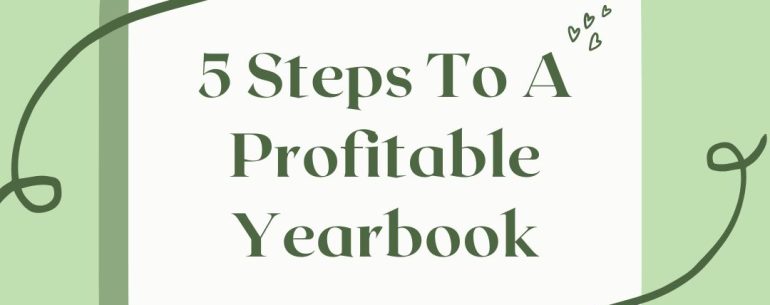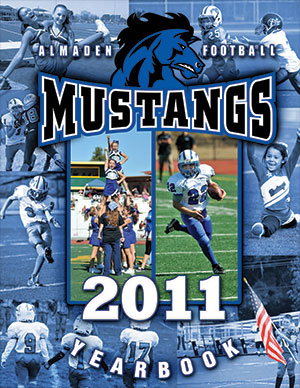For more than 15 years, League Prints has been helping schools, teams and little leagues to put together successful yearbooks. Through years of experience, we have come to see that there are 5 important strategies to putting together a profitable yearbook. In this article we highlight and discuss those 5 steps.
Develop a timeline: Set deadlines for the collection of photos and stories, and for the design and printing of the yearbook.
When preparing your yourbook, it is important to develop a timeline that will ensure all necessary steps are completed on time. This timeline should include a set of deadlines for the collection of photos and stories, as well as for the design and printing of the yearbook.
The first step in the timeline should be to determine a deadline for the collection of photos and stories. This should be done early in the season so that players, parents, and coaches have plenty of time to submit materials. It is recommended that this deadline be set at least one month prior to the end of the season. This deadline should be clearly communicated to all parties and emphasized throughout the season.
Next is to determine a deadline for the design and printing of the yearbook. This deadline should be set with enough time for the yearbook to be printed and distributed before the end of the season. To ensure that the yearbook is printed in a timely manner, the deadline for design and printing should be set to at least two months prior to the end of the season.
The final step is to determine the deadline for the distribution of the yearbook. This should be done at least two weeks prior to the end of the season to ensure that everyone has ample time to receive and review the yearbook. It is recommended that this deadline be clearly communicated to all parties and that the yearbook be distributed in a timely manner.
Create a budget: Consider costs for supplies, printing, and shipping.
Creating a budget for your yearbook is one of the best ways to ensure that you have the resources you need to produce a successful publication. A budget is a plan outlining how much money will be used to pay for expenses associated with the yearbook, such as printing and supplies. It also includes estimated income from yearbook sales and other sources. Having a budget in place helps you stay on track throughout the year and make sure that you have enough money for all the costs associated with the yearbook.
One of the primary benefits of creating a budget for your yearbook is that it makes it easier to estimate the cost of printing the yearbook. Knowing how much money will be needed for printing and other expenses allows you to plan ahead and make sure that you have enough funds for the project. It also helps you determine how many copies to print and what types of features to include, such as color photos or extra pages.
Having a budget helps you stay organized throughout the year. With a budget in place, you can keep track of expenses and income, ensuring that you have enough funds to cover all of the costs associated with producing the yearbook. You can also keep track of the sales and make sure that you are meeting your goals.
A budget for your yearbook also helps you plan for the future. By setting goals and allocating funds accordingly, you can ensure that you have the resources to produce a successful yearbook in the future. You can also save money by setting aside funds for future yearbooks, which can help you keep costs down while still producing a high-quality publication.
Recruit volunteers: Assign tasks to team parents, coaches, and other volunteers who can help with the yearbook project.
Recruiting volunteers can be an excellent way to ensure that the yearbook is created in an efficient and timely manner. Volunteers can be assigned tasks such as taking pictures, collecting stories, and gathering quotes from team members and coaches. Having multiple volunteers working on the yearbook will help to streamline the process and can make it much less stressful for the head volunteer.
Volunteers can also help to make the yearbook more meaningful. They can help to capture special moments that may have been missed by the head volunteer or the team. For example, volunteers can take photos of team members celebrating after a big win or laughing with each other during practice. They can also help to collect stories and quotes from the team members, which can be a great way to add personal touches to the yearbook.
Furthermore, volunteers can provide a sense of community within the team. Having multiple volunteers working on the yearbook can encourage team members to get involved and work together to create a meaningful keepsake. This can be a great way to create a sense of camaraderie within the team and provide a sense of ownership for the yearbook.
Collect content: Take pictures and write stories about the season’s highlights.
Collecting content is an essential process for your yearbook. It is an incredibly rewarding experience for both the players and their families. Not only does it provide a lasting memento of the season, but it also allows families to capture the memories and camaraderie of the Little League experience.
The content collected for a yearbook can include photographs, quotes, and game summaries, as well as general information about the team and the season. Photos of the players in action, team huddles, and team celebrations can be used to illustrate the spirit and energy of the sport. Quotes from players, coaches, and families can capture the joys and struggles of the season, as well as the team’s accomplishments. Game summaries can serve as a reminder of the games contested and the team’s successes.
Having a yearbook allows teams to create a record of the season that can be referenced for years to come. It provides a way for family members to look back on the season and remember the experiences shared by their children. It also serves as a tangible reminder of the time and effort put in by the players, coaches, and families to make the season a success.
Collecting content for your teams yearbook can help to ensure that the memories of the season are preserved and shared with future generations. It is a great way to commemorate the season and the players involved and to help build a lasting bond between the players, their families, and the Little League community.
Sell ads: Reach out to local businesses to place ads in the yearbook.
Selling ads for your yearbook can be a great way to raise money for your organization. Not only does it help to offset the cost of production, but it also provides a unique opportunity for local businesses to connect with the families and players of your little league.
Ads can be sold in a variety of formats and sizes, allowing businesses to customize their message and reach a large audience. The ads can be placed in the yearbook, in the program book, or on the back cover, depending on the size and budget of the advertiser.
Ads can also be used to promote sponsors of your team. This can be particularly helpful for businesses that don’t have a physical presence in the area, as it allows them to create an association with your little league. This can lead to increased brand recognition and loyalty among your players, parents, and fans.
Ads provide a great way to recognize and thank the businesses that have supported your league throughout the year. By placing their ad in the yearbook, you can show your appreciation for all the ways in which they’ve helped make your league successful. This can be an invaluable way to cultivate relationships with local businesses, and ensure that they’ll continue to support your league in the future.
In Conclusion
It is important to follow a list of steps when putting together print content. Having a profitable yearbook is an important goal for any school or organization. By following the steps to ensure a successful yearbook, schools can ensure that their yearbook is both a financial and creative success.
Click Here for a sample yearbook









